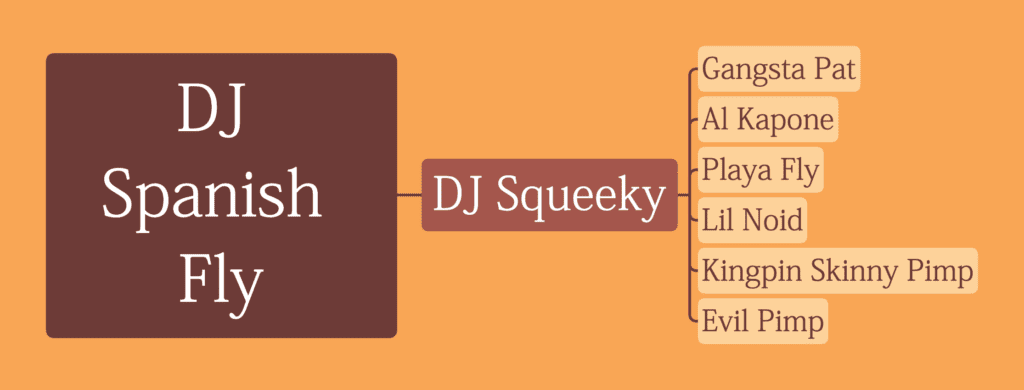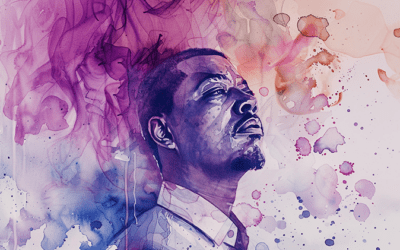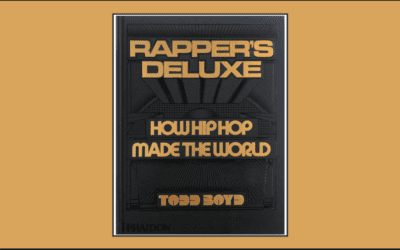Memphis, a city with a rich musical history, has been a breeding ground for influential and underrated artists who have left an indelible mark on the rap scene. This article takes a closer look at some artists who emerged in the early and mid-90s, their contributions, and their lasting impact on the Memphis rap scene. Let’s start with DJ Spanish Fly, the originator. Learn more about Memphis rap here.
The Trailblazing Genesis: DJ Spanish Fly

DJ Spanish Fly, the trailblazer of Memphis rap, sculpted the city’s distinctive sonic landscape. His masterful command at the turntables ignited the first rap rhythms at Club No Name, shaping the musical tastes of a young, ravenous audience. His audiotapes, brimming with his own explosive tracks nestled between chart-toppers, captivated the city’s youth, hungry for raw, unfiltered material. His audacious creativity sparked a seismic shift, shattering Yankee norms and redefining the boundaries of rap music.
Listen to “Cement Shoes” and witness DJ Spanish Fly’s ahead-of-his-time sensibilities. For reference, the original release date was 1987. It was released as a single in 1994. DJ Spanish Fly almost rivaled Three 6 Mafia’s influence on Memphis Rap. Read further.
The Rappers DJ Spanish Fly Influenced
The Autonomous Industry: Tommy Wright III
Tommy Wright III, a one-man gangster rap cottage industry, was another key figure in the Memphis rap scene. His use of cowbells is reminiscent of DJ Spanish Fly’s “Cement Shoes.” He released five self-produced solo albums, two more with the group Ten Wanted Men, and owned, operated, and produced the entirety of Street Smart Records’ discography. He is almost entirely absent from streaming platforms, a tragedy. YouTube is your best bet to find his music. Find more about Memphis rap here.
The Unerring Maestro: DJ Squeeky
DJ Squeeky, another key figure in the Memphis rap scene, was known for his thundering, rat-a-tat beats that defined the early era of Memphis rap. His sound was so influential that many of Memphis’s premier rap talent, including 8Ball & MJG, Skinny Pimp, and Tom Skeemask, passed through his Orange Mound bedroom studio. Squeeky’s influence was so profound that he argued his dominance was only broken through theft and mimicry, not superior artistry.
The Harmonic Stax Connection: Gangsta Pat
Gangsta Pat, son of the drummer Willie “Too Big” Hall, a Stax house musician, was another influential figure in the Memphis rap scene. His music was as much influenced by the sweaty Beale Street juke joints and smoke-filled sessions at Stax as by Spanish Fly’s bedroom tapes. His 1991 album, #1 Suspect, was the first Memphis rap record issued by a major label, Atlantic Records.
The Cinematic Luminary: Al Kapone
Al Kapone, another Memphis rapper, gained fame through involvement in the 2005 film Hustle & Flow. He wrote the song “Hustle & Flow” for the film, made a cameo, and featured his song “Get Crunk, Get Buck” on the official soundtrack. His career, however, was not without its strange moments, such as his enthusiastic endorsement of a Republican congressional candidate in 2012.
The Celestial Intervention: Playa Fly
Playa Fly, a rapper with a unique story of divine intervention, was another key figure in the Memphis rap scene. William “Billy Boy” Young’s father was a singer in The Ovations, a somewhat acclaimed soul group in the 1960s and ’70s. Fly’s music career began earnestly when he started rapping with a local DJ, likely DJ Paul of Three 6 Mafia.
The Kingpin: Skinny Pimp
Kingpin Skinny Pimp, another influential figure in the Memphis rap scene, was known for his tongue-twisting, double-time verses. His album, King Of Da Playaz Ball, is considered an essential Memphis album. However, his relationship with DJ Paul ended when Paul convinced him to sign away all of the rights to Playaz Ball for a pittance relative to the album’s success.
The Cryptic Enigma: Lil Noid
In the constellation of Memphis Rap, Lil Noid is a star that burns with a distinct and enigmatic light. While not as widely recognized as some of his contemporaries, his contribution to the genre is nonetheless significant and resonates within the Memphis rap scene.
Lil Noid, a native of Memphis, emerged on the rap scene in the mid-90s, when the city was a hotbed of musical innovation. His debut album, Paranoid Funk, released in 1995, was a testament to the unique sound brewing in the city. The album was a fusion of dark, haunting beats and gritty lyrics that painted a vivid picture of life on the streets of Memphis. His music is somehow darker than DJ Spanish Fly and his Memphis contemporaries.
What set Lil Noid apart was his ability to weave complex narratives with his lyrics, creating a tapestry of stories that were as compelling as they were unsettling. His music was a reflection of the harsh realities of his environment, yet it also served as a form of escapism, offering listeners a glimpse into a world that was both familiar and alien.
Despite the raw talent evident in his music, Lil Noid’s career was marked by a series of setbacks and challenges. His journey in the music industry was tumultuous, fraught with obstacles that would have deterred a less determined artist. Yet, Lil Noid persevered, creating music that was true to his vision and reflective of his experiences.
In recent years, Lil Noid’s music has experienced a resurgence in popularity, finding a new audience among underground rap fans. His unique sound, once overlooked, is now celebrated for its originality and authenticity. While Lil Noid may not have achieved the mainstream success of some of his peers, his impact on the Memphis rap scene is undeniable.
The Sinister Maestro: Evil Pimp
Evil Pimp strikes a discordant yet captivating note in the symphony of Memphis rap. Known for his sinister beats and chilling lyrics, Evil Pimp has carved out a niche for himself in the genre, becoming a figure of intrigue and fascination.
Emerging on the Memphis rap scene in the late 90s, Evil Pimp was a stark contrast to the more mainstream artists of the time. His music, characterized by its dark themes and eerie soundscapes, was a departure from the norm, pushing the boundaries of what was considered acceptable in rap music.
Evil Pimp’s debut album, Da Exorcist Returns, released in 2003, showcased his unique style. The album was filled with haunting beats and lyrics that delved into the darker aspects of life on the streets. His music was not for the faint of heart, but for those who dared to listen, it offered a raw and unfiltered look at the world through his eyes.
One of the defining characteristics of Evil Pimp’s music is his ability to create an atmosphere of tension and unease. His beats, often slow and heavy, create a sense of impending doom, while his lyrics, delivered in a menacing drawl, add to the overall sense of dread. This ability to evoke strong emotions in his listeners is a testament to his skill as an artist.
DJ Spanish Fly The Influencer Forever
In the grand narrative of Memphis rap, DJ Spanish Fly is a pivotal figure, a pioneer whose influence reverberates through the music of those who followed in his footsteps. His innovative approach to music laid the groundwork for artists like DJ Squeeky, Gangsta Pat, Al Kapone, Playa Fly, Kingpin Skinny Pimp, Tommy Wright III, Lil Noid, and Evil Pimp, all of whom have contributed to the rich tapestry of the Memphis rap scene in their own unique ways.
DJ Spanish Fly’s legacy reveals innovation and the enduring appeal of authentic, unfiltered music. His story serves as a reminder that success is not always measured by commercial popularity but by the ability to inspire others. As we look back on the history of Memphis rap, we see DJ Spanish Fly’s influence etched into every beat, every lyric, and every artist who dared to push the boundaries of the genre.


